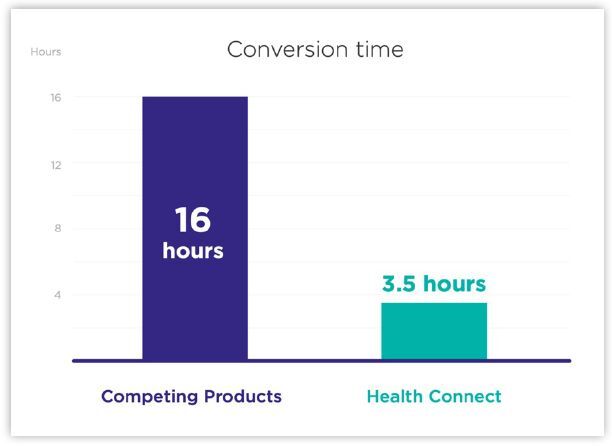
Across the United States, when application integration at scale is required, healthcare leaders turn to InterSystems HealthShare® Health Connect™. Whether it’s for bridging EMRs, for better care decisions at the bedside, for innovations in telehealth and remote care, for business growth, or preparing for the future, InterSystems and Health Connect are ready to help you and your organization reach your goals. The stories below provide just a few examples of InterSystems healthcare integration in action.
1. Interoperability at Scale Contributes to a Successful Epic Deployment
The IT systems of a major integrated delivery network (IDN) in the northeastern US serve 13 hospitals, thousands of clinicians, and 1.5 million patients annually. When the organization replaced its inhouse developed clinical and financial applications with Epic, the integration capabilities of Health Connect helped make it a smooth transition by managing:
- 5,000 connected medical devices
- A 225% growth in data volume outside of Epic (from 20TB to 65TB) due to genomics, new imaging technology, and connected devices
- A 34% increase in the number of interfaces between Epic and other IT systems
- A nearly 330% increase in message volume after the Epic deployment (73 million per day)
Together, Epic and Health Connect are giving the organization a new level of care coordination and standardization and will serve as a platform for innovation going forward.
KLAS Research website reviews, 2022
2. From 15 Integration Engines to 1, Saving $21 Million
You don’t become one of the Top 3 integrated delivery networks (IDNs) in the US without acquiring a lot of different software systems along the way. That includes the integration engines in place to connect everything through a legacy of thousands of interfaces.
When this IDN decided to consolidate on a single integration platform, the team knew they were investing not just in software, but in a large-scale migration project. With only four developers the organization converted and deployed over 2,000 interfaces to InterSystems HealthShare Health Connect in 21 months, toward its goal of replacing 7,000 interfaces. What’s more, the IDN is expected to save $3,000 per interface in development costs, for an estimated total savings of $21 million. By supporting one of the largest centralized integration projects in the world, Health Connect is ensuring that the organization can continue to grow and scale a connected health business.

Sage Growth Partners survey of 100 healthcare executives, October 2021
3. A Zero-downtime Implementation of HealthShare Health Connect, 1 Year Ahead of Schedule
When the COVID-19 pandemic hit, this university medical center in the southeastern US was engaged in replacing its 30-year-old, home-grown data integration engine with InterSystems HealthShare Health Connect. Downtime during this process, and the risk of cutting off clinicians and researchers from vital patient data, was not an option.
The medical center worked with InterSystems to execute the integration engine replacement one year ahead of schedule. The IT team connected clinicians from 60 healthcare facilities to information from 300 data interfaces without clinical staff being aware that anything had changed beneath the applications they used every day. And with zero downtime, all resources could focus on care amid the growing pandemic.
4. Integration at Scale for Business Growth and Care Innovation
In the western US, a major IDN has grown to encompass 23 physical hospitals, one virtual hospital, 215 clinics, telehealth operations in six states, an insurance plan, and 40,000 care givers. The organization used InterSystems integration technology to enable and manage this growth while staying agile and innovative. Since 2014, InterSystems technology has served the IDN’s mission and goals by:
- Processing 225-250 million transactions per month with absolute reliability
- Integrating data from 220 unique applications
- Connecting EMRs to home-based devices in its virtual hospital, and for telehealth
- Sharing data with external partners using the FHIR standard
- Leveraging FHIR to simplify provision of data for its consumer portal
- Rapidly integrating data and processes when acquiring new medical practices
KLAS Research website review, 2021

























